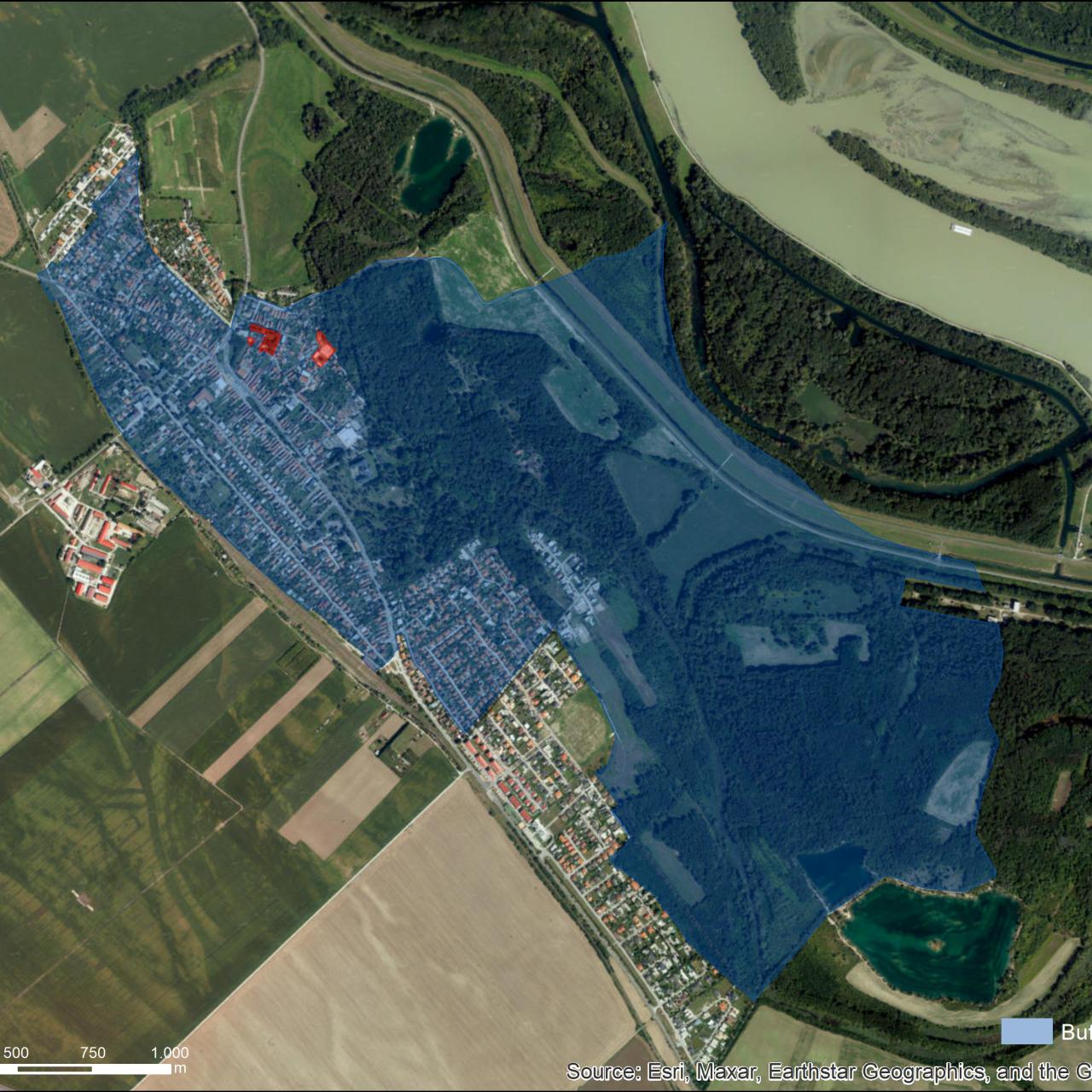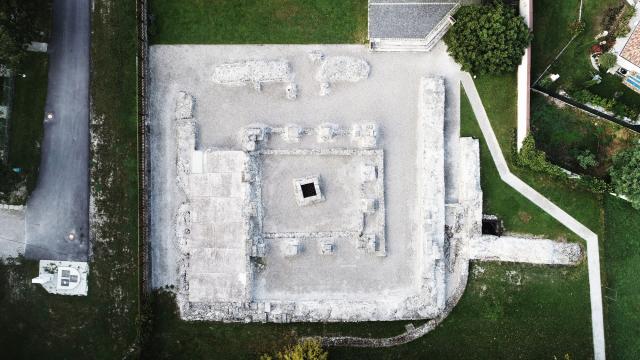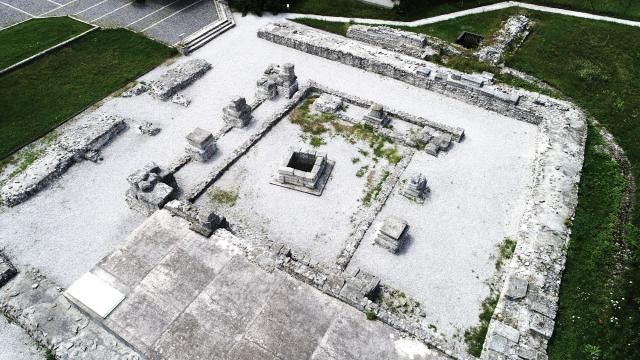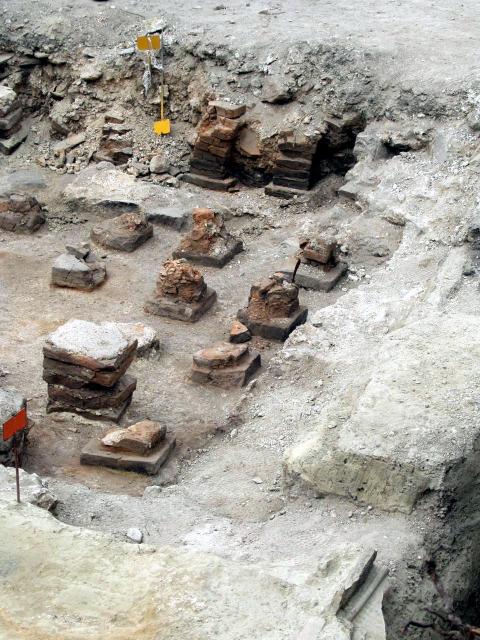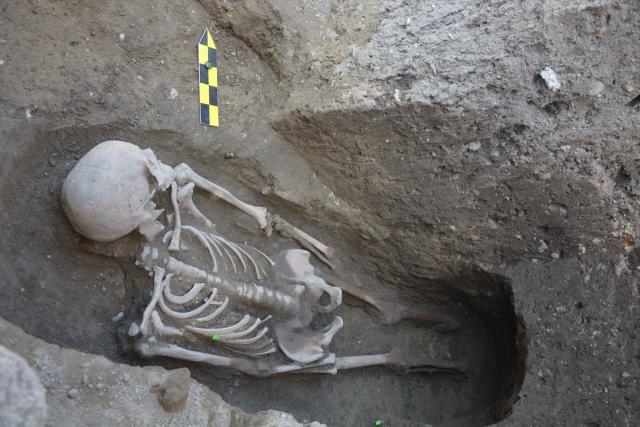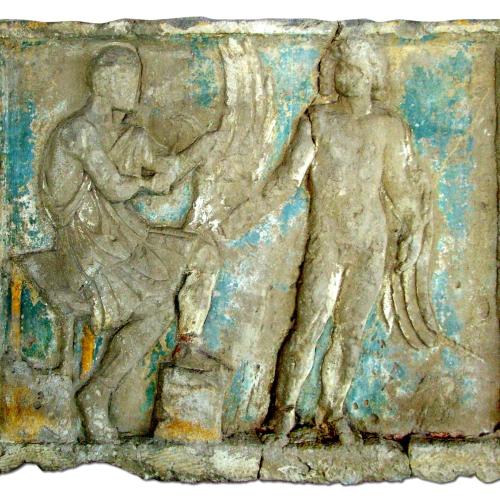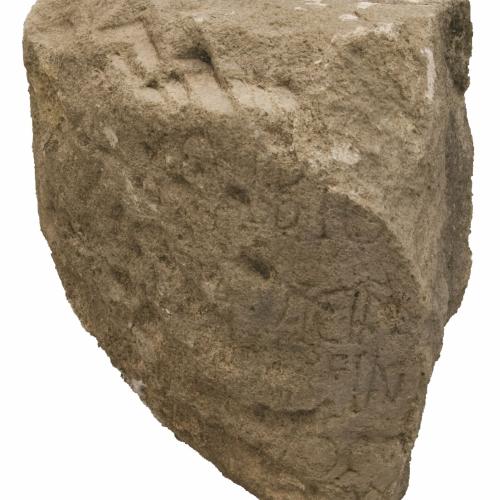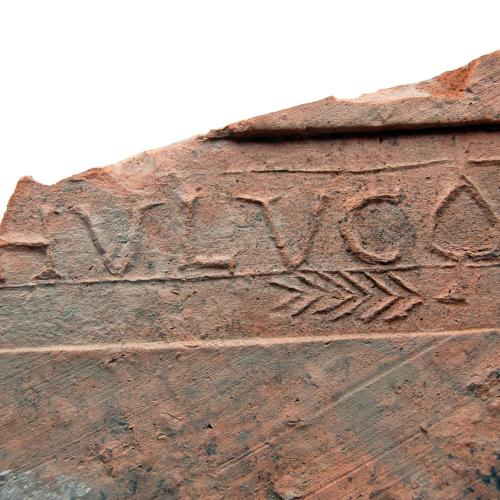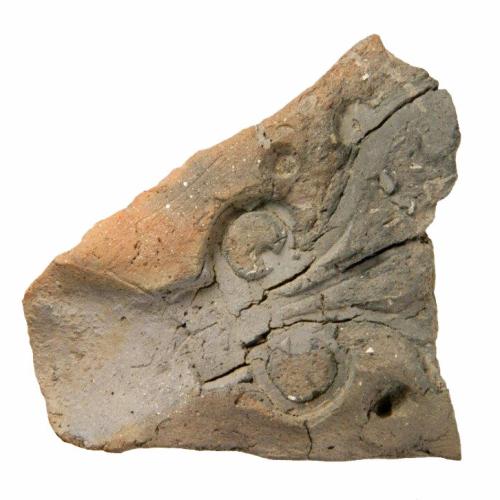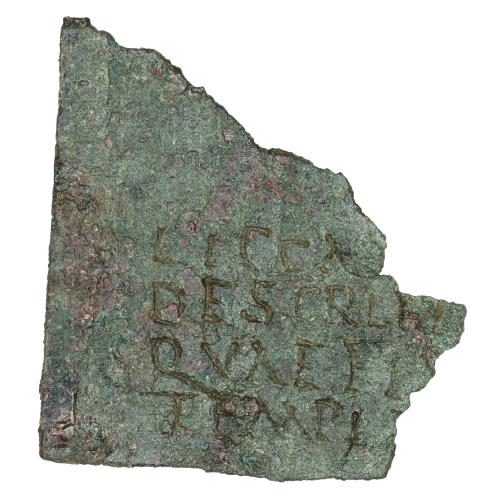Danube Limes Component
Hypokausthaus
Kastell
Vicus
cohors V Lucensium (1. - 2. Jh.)
ala I Cannanefatum (2. - 4. Jh.)
The Gerulata castellum was the first Roman military camp in the line between Carnuntum and Ad Flexum. At the end of the 19th century, Ágost Sőtér carried out the first archaeological excavations in the area of today's Rusovce, a borough of Bratislava. The stone walls of the castellum were discovered in the 1960s. The exploitation of soil from the hill behind the Church of St. Mary Magdalene, which was required for the construction of the Danube embankments, unearthed the Roman fort from the 4th century. The archaeological excavations gradually uncovered a civilian settlement, burial grounds, and villae rusticae, making it possible to define the four construction stages of Gerulata.
The late-ancient fortress, currently within the premises of the Bratislava City Museum – Ancient Gerulata, represents the fourth and final stage of construction. This fortified stone tower, with dimensions of 29 × 30 m, contains a partially preserved interior floor. The tower had twelve massive pillars that formed a courtyard, with the well in the middle. The fortress was built into the northern corner of the original fort. Spolia (reused older stone elements), on display in the museum's lapidary, were also used for its construction.
There is a civilian settlement (vicus) near the castellum. Masonry buildings for the wealthiest civilian residents were unearthed outside of the castellum northwestern gate (today Irkutská Street) near Via Carnuntina, i. e. the leading road to Carnuntum. The stone foundations of buildings, settlement pits, a skeletal grave, catastrophic horizons, layers of Roman roofing, and planar and building layers are a testimony to reconstructions in the vicus, which appears to be a street of buildings. The most important building is the house with underfloor heating (hypocaustum), dated back to the last third of the 3rd and the beginning of the 4th centuries, i.e. the third construction stage of Gerulata. It is the only one of its kind preserved in Slovakia. The house was located above an older house made of unburnt bricks. Skeleton graves are also present.
Visit museums exploring the history of this site
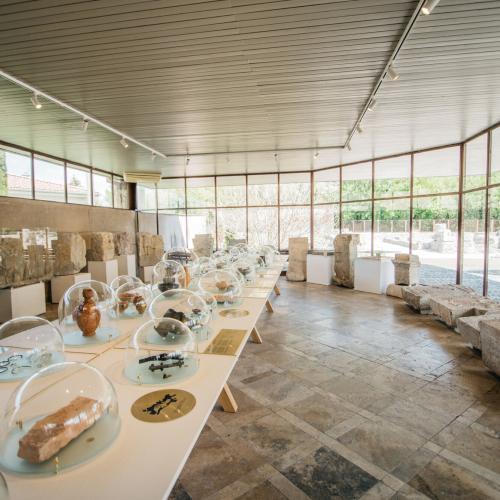
The Bratislava City Museum – Ancient Gerulata
The Bratislava City Museum – Ancient Gerulata was established in 1987 on the site of the former Roman military camp and part of the civilian settlement located northwest of the fort.
In the exterior part of the museum, there is a late antique fortress from the 4th century as well as foundations of older fortification elements and architecture from the 1st to the 4th centuries. The lapidary, situated in the modernist building, presents an exhibition of stone artwork, the results of archaeological excavations, and the history of Gerulata. A virtual walk through the castellum is available in the museum's treasury.
